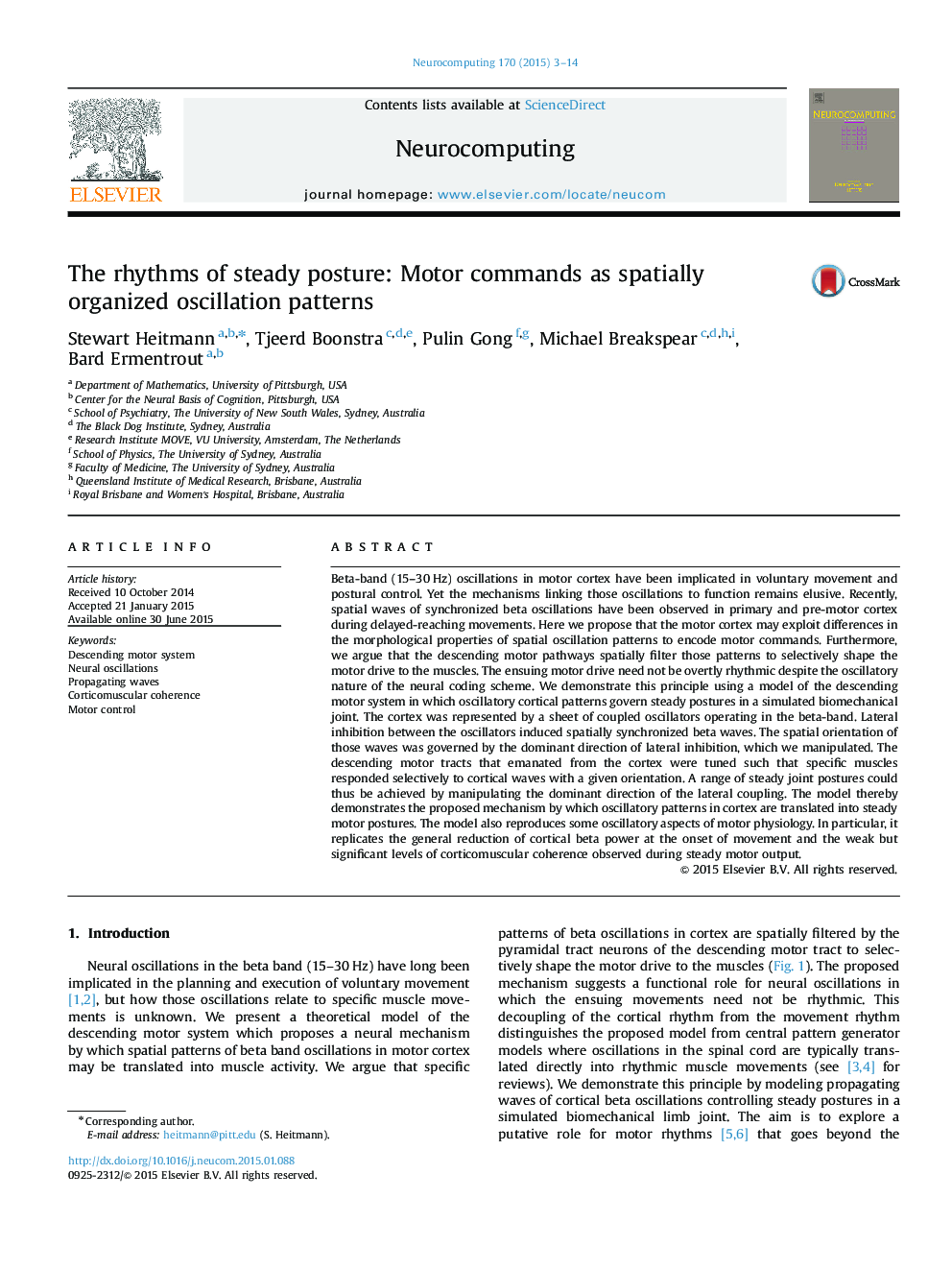| کد مقاله | کد نشریه | سال انتشار | مقاله انگلیسی | نسخه تمام متن |
|---|---|---|---|---|
| 406022 | 678056 | 2015 | 12 صفحه PDF | دانلود رایگان |
• We propose a functional role for spatially organized oscillations in motor cortex.
• Motor commands are encoded in the morphology of spatial oscillation patterns.
• A neural mechanism for translating those patterns into motor drive is presented.
• Steady motor drives are maintained for the lifetime of the oscillation patterns.
• The mechanism also reproduces physiological aspects of corticomuscular coherence.
Beta-band (15–30 Hz) oscillations in motor cortex have been implicated in voluntary movement and postural control. Yet the mechanisms linking those oscillations to function remains elusive. Recently, spatial waves of synchronized beta oscillations have been observed in primary and pre-motor cortex during delayed-reaching movements. Here we propose that the motor cortex may exploit differences in the morphological properties of spatial oscillation patterns to encode motor commands. Furthermore, we argue that the descending motor pathways spatially filter those patterns to selectively shape the motor drive to the muscles. The ensuing motor drive need not be overtly rhythmic despite the oscillatory nature of the neural coding scheme. We demonstrate this principle using a model of the descending motor system in which oscillatory cortical patterns govern steady postures in a simulated biomechanical joint. The cortex was represented by a sheet of coupled oscillators operating in the beta-band. Lateral inhibition between the oscillators induced spatially synchronized beta waves. The spatial orientation of those waves was governed by the dominant direction of lateral inhibition, which we manipulated. The descending motor tracts that emanated from the cortex were tuned such that specific muscles responded selectively to cortical waves with a given orientation. A range of steady joint postures could thus be achieved by manipulating the dominant direction of the lateral coupling. The model thereby demonstrates the proposed mechanism by which oscillatory patterns in cortex are translated into steady motor postures. The model also reproduces some oscillatory aspects of motor physiology. In particular, it replicates the general reduction of cortical beta power at the onset of movement and the weak but significant levels of corticomuscular coherence observed during steady motor output.
Journal: Neurocomputing - Volume 170, 25 December 2015, Pages 3–14
